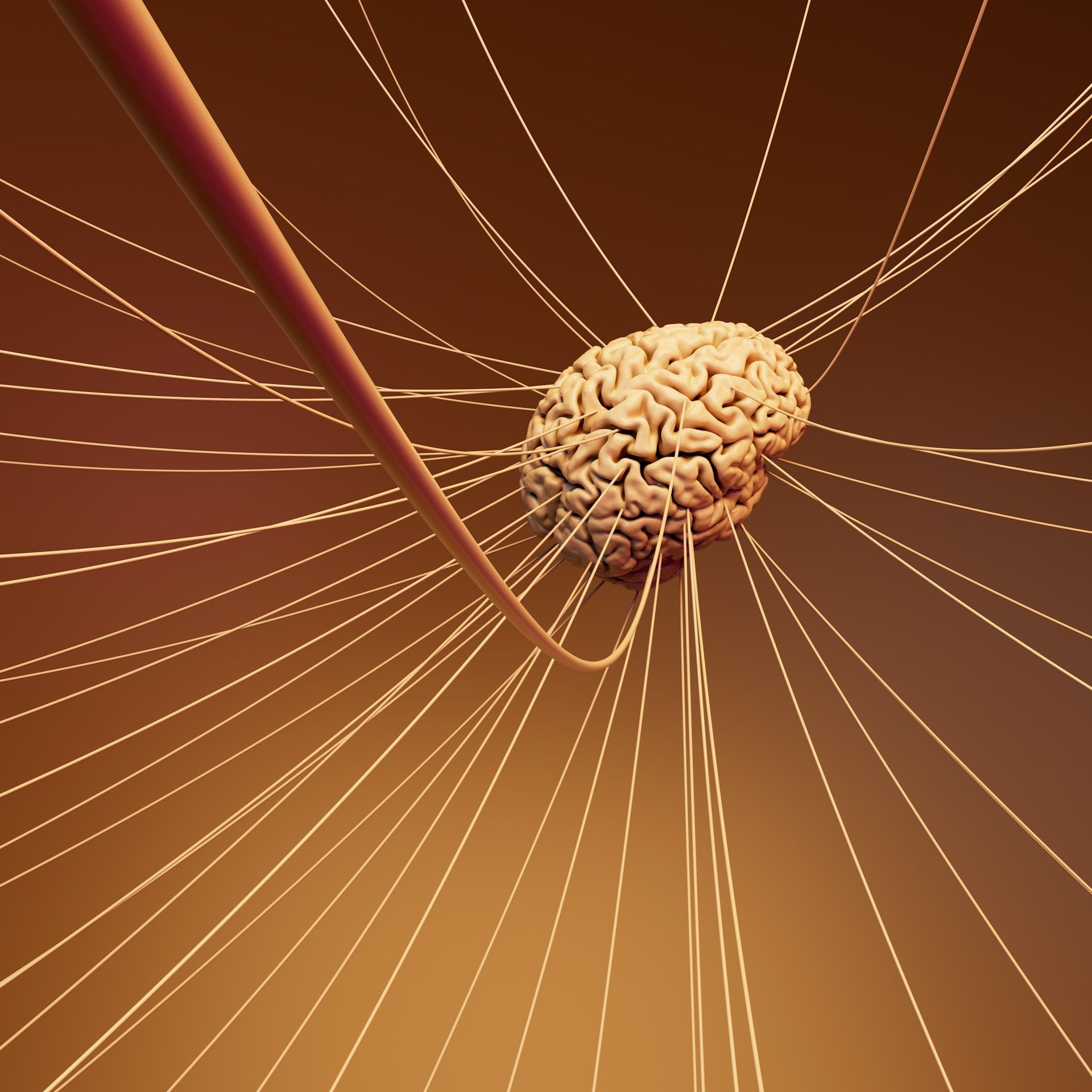What Is Your HPA Axis and How Does Yoga Affect It? (Updated for 2025)
Yoga can calm this neural channel that can affect your mental and physical health
Quick — visualize your stereotypical yogi. You probably imagined somebody serene, calm and gentle, patient with others, slow to anger and striving to live in harmony with all other living creatures. You didn’t picture someone throwing a gravy boat during Thanksgiving dinner in a pique of rage.
Now, mindfully explore this stereotype and ask yourself why it came to be. Is it more likely that only people who are innately placid and good-natured who feel drawn to the practice? Or could the combination of soothing (albeit sometimes challenging) movement and meditation impact the biology of the brain, resulting in behavioral and temperament changes?
It might seem like a chicken-or-egg question, but scientific data suggests that it is not. Multiple neurobiology studies indicate that the ancient practice of yoga results in physiological changes that do much more than tone your thighs or stretch your tired hamstrings after a hike. They influence how your brain and nervous system operate — in positive ways that can counteract some of the toxicity so many of us experience in daily life.
One such structure that yoga impacts is your HPA axis. What is your HPA axis and how does yoga influence it? Let’s take a closer look.
What Is Your HPA Axis?
The term “HPA axis” stands for hypothalamus-pituitary-adrenal axis. In a sense, it’s a type of neural pathway — one that everyone has. However, how it functions depends on myriad factors, including your unique genetic code and environmental influences. The latter category covers a lot, including everything from the foods you eat and medications you take to your daily experiences as you navigate through life.
Environmental influences also explain much of yoga’s therapeutic effects. Here’s the beauty part of the human body, and one that I’ll emphasize time and again in articles as a trauma survivor: any part of your anatomy that can change for the worse because of adverse experiences can likewise improve with positive ones.
Anything that can be damaged can also be healed.
To understand your HPA axis function, it helps to break it down to its component parts.
1. Your Hypothalamus
Your hypothalamus is one of several glands in your brain responsible for how your body responds to environmental stimuli and changing situations. You can think of it as the “supervisor” in charge of all the others that release various hormones into your bloodstream to carry out important jobs. It also acts as a bridge between your nervous and endocrine systems, telling which glands to secrete which hormones and in what amounts to navigate the external world while avoiding harm.
If your body was a home, your hypothalamus would be your master control panel for operating your smart home system. Like an operator at an old-style switchboard, it attempts to
keep your body in homeostasis — a stable state where everything runs smoothly. It regulates heat and cold through shivering and sweating and plays roles
in the following processes:
- Thirst
- Appetite
- Growth
- Weight control
- Salt and water balance
- Sleep-Wake cycles
- Sex drive
- Childbirth
- Breast milk production
- Emotions
Those with trauma histories should also note that the hypothalamus plays a crucial role in your body’s fight or flight response in two ways: by telling your
adrenal glands to release cortisol and activating your sympathetic nervous system. Its job is to allocate your body’s resources appropriately to help you survive the crisis.
When your body perceives a crisis, your hypothalamus suppresses reproduction and growth functions. It stimulates energy mobilization in your liver and creates vasoconstriction, or the
tightening of your blood vessels to raise your pressure and deliver the good stuff to your peripheral muscles so that you can fight back or get out of Dodge in a hurry.
Finally, your hypothalamus makes dopamine, often called the brain’s “reward” chemical. This neurotransmitter partially explains the gland’s affect on your overall mood, although several other factors also play a role.
2. Your Pituitary Gland
Your pituitary gland is part of your endocrine, or hormonal system. It sits at the bottom of your hypothalamus and is connected to that gland by a thick
cluster of blood vessels called the pituitary stalk or infundibulum. It’s responsible
for producing several hormones, including:
- Adrenocorticotropic hormone (ACTH): Stimulates the production of steroid hormones such as cortisol in the adrenal glands. During a crisis, your hypothalamus releases corticotropin-releasing hormone that tells your pituitary to produce ACTH.
- Vasopressin: Controls water balance.
- Follicle-stimulating hormone and luteinizing hormone: Controls the menstrual cycle.
- Growth hormone
- Oxytocin: The so-called “cuddle” hormone that produces positive, safe feelings. It also tells your uterus to contract when it’s time to give birth.
- Endorphins: Cause the so-called “runner’s high,” increasing pleasure and reducing pain.
- Enkephalins: Similar to endorphins in function.
- Prolactin: Causes milk production and breast enlargement.
- Thyroid-stimulating hormone: Tells your thyroid how much T3 and T4 to release.
3. Your Adrenal Glands
Your adrenal glands sit atop your kidneys, which are located along your back directly below your ribcage — they aren’t quite as low as many people think. It produces two types of hormones: catecholamines and steroid hormones.
Catecholamines, which include adrenaline (epinephrine) or noradrenaline (norepinephrine), arise from physical or emotional stress. Steroid hormones, including cortisol, affect several bodily systems, including your immune system and inflammation levels.
Adrenaline is a powerful but short-lived hormone
produced by your adrenal medulla. Think back to the last time another vehicle swerved too close to you in traffic, causing you to take immediate evasive action. That flush you feel fading in the moments after narrowly avoiding a collision is your adrenaline fading and your noradrenaline returning your body to homeostasis.
Cortisol, however, is a much longer-lasting stress hormone produced in your adrenal cortex. It controls your body’s use of fuel — fats, carbohydrates, and proteins and maintains fluid balance. It also suppresses inflammation, aids in blood pressure and glucose regulation, and helps manage your sleep-wake cycles or circadian rhythm.
Please note that when it works as intended, cortisol tames inflammation. Your body generally produces just enough of it, assuming that your stressors fade away like hungry lions departing in the distance to chow down on a zebra instead of you.
However, when stress becomes chronic, you can develop resistance to cortisol’s effects. Your body’s chemicals don’t work in isolation — they require receptors. Constant exposure to a flood of a particular substance deadens these receptors, meaning that the hormones or neurotransmitters that once influenced their function no longer have much effect.
Think of it like resistance to alcohol or drugs. Those that habitually use too much become numb to the effects, requiring more and more of the abused substance to produce the desired effect. Cortisol causes a similar issue, but since this hormone influences functions like your metabolism, inflammation and immunity, resistance can result in unpleasant health woes like weight gain or loss, more frequent illnesses and widespread chronic pain.
How Does Yoga Affect Your HPA Axis?
Phew! That was a lot of science to absorb. Now that you understand the various parts of your HPA axis, what happens when it gets activated? Furthermore, how does yoga affect this critical neural pathway?
Signs You Have Triggered Your HPA Axis
Your body will feel it when your HPA axis becomes activated. However, how you respond depends in large part on your trauma history.
You now know how the system works in a healthy individual, but exposure to trauma creates physiological changes that alter its response. For example, people with CPTSD might not seem — or internally feel — as reactive to external stimuli as others. Anhedonia describes the inability to feel pleasure, but it’s more accurate to say your system becomes so overwhelmed from constant bombardment that your typical emotional channels shut down.
As a result, you take little joy in your triumphs, and many issues that may cause others significant stress may seem to roll off your back like nothing. However, when something does activate your stress response, it goes into overdrive. You might explode at a relatively minor inconvenience, flying into a rage or conversely, lapsing into a deep depression. The shame you feel over your behavior compounds the problem, and you can chase your support system away with rash, irrational acts.
Here’s the beauty part, though. Ask yourself, how did your HPA axis become dysfunctional in the first place? Through practice — the repeated strain of various traumas across the course of untold years. That’s where yoga can help. It begins to retrain these very real, very valid, physiological processes by temporarily removing you from the chaos of the outside world and transporting you to a sanctuary of self-care where calming and relaxing are the aims of the game.
Please note: You don’t have to have a trauma history to reap these benefits. However, time on the mat helps anyone build resilience, the ability to bounce back from stressful scenarios when they occur. Everyone has some degree of strife, but keeping your physiology working smoothly supports emotional regulation, letting you respond appropriately when life inevitably happens.
Therefore, you might want to “talk to your mat” when you experience the following:
- Rage: Anger is always a signal, but relatively few insults in life merit violent reactions like yelling and screaming. It’s never justifiable to belittle or insult someone, and physical harm should remain in the sole province of self-defense. If something triggers intense anger on you, a vigorous yoga flow can help you dissipate that excess cortisol by letting your fight-or-flight response act as nature intended — in a controlled, safe way that harms no one, including yourself.
- Panic: Here, too, more vigorous styles like vinyasa and Ashtanga are your friends. They manage your fight-or-flight response and the resulting hormonal storm that can cloud your judgment.
- Overwhelm: Yoga can seem like one more chore when you already have a tight schedule. However, that can be when you need to talk to the mat the most. Chronic stress contributes to long-term imbalances and can numb your HPA axis response to normal stimuli. As a result, you might start to shut down emotionally, but numbing your feelings is never the answer. It adversely affects your mental health and eventually your physiology, as, like Bessel van der Kolk says, your body keeps the score. Gentle, restorative or Yin practices are best when overwhelm strike, as these classes feel more nurturing when you’re frazzled. They also provide silent space for processing your emotions mentally while training your physical self to relax and not become swept away by their power like a swimmer in a rip tide.
- Worry: Worry is a wasted emotion — but try telling yourself that when your mind spins with “if onlys” and rumination. It can even be dangerous, blinding you to the real-life dangers in front of you while you remain lost in thought. However, your thoughts arise from electrochemical impulses in your brain and body. When you can’t find peace through mentally rehashing scenarios you often cannot change, you can quiet the physiological storm that makes it harder to think clearly.
How Yoga Calms an Overactive HPA Axis
Yoga calms an overactive HPA axis by impacting the following things in your body.
1. Cortisol Levels
When your HPA axis gets activated, it tells your adrenal glands to excrete more cortisol. Moderate exercise is perhaps the best holistic way to moderate your levels of this hormone. You don’t want to go too hard, as overly intense training can result in an increase. However, low-intensity work like yoga doesn’t spike cortisol while you train and produces a lasting calming effect afterward.
2. Your Vagus Nerve
Your vagus nerve is the longest of your 12 cranial nerves, and it plays a crucial role in your body’s relaxation response. It carries messages between your brain and various body parts. Yoga gently massages your vagus nerve, as does deep breathing. Coordinating your breath-body movements helps you to relax.
When your HPA axis gets activated, it’s like stepping on the gas and putting the pedal to the metal. Yoga hits the brakes and puts the car in reverse. It shows your body — not through words but gentle action — that everything is okay, you’re safe, and it’s time to relax.
The Long Term Effects of Yoga on Your HPA Axis
Here’s where yoga has perhaps the most profound effect on your HPA axis. Over time, the practice teaches you how to experience stress without becoming activated — at least to the degree where you feel like everything is spinning out of control.
Even in restorative yoga, it’s sometimes challenging to hold certain postures for a long time. While you’re always free to exit out if you experience discomfort, staying the course and breathing through the pose retrains your body on how to handle stress. Instead of flying into a panic or coping through maladaptive means like reaching for the bottle, you learn to pause, breathe and reflect before acting.
It takes time to retrain your HPA axis — but yoga is a practice. It’s also the ideal way to get your daily movement while practicing gentle self-care. I can’t describe how liberating it is when you free yourself from the very real, yet very harmful, body responses that make it so hard to think when stress, panic and anxiety strike, too often leading to actions that make a bad situation worse. You take control, not your learned responses. It’s empowering.
Yoga and Your HPA Axis
Your HPA axis plays a crucial role in your body’s fight-flight-freeze response. However, chronic stress and traumatic experiences can damage how this system works. When it malfunctions, it can adversely impact your mental and physical health by driving you to unhealthy responses and behaviors.
However, yoga can repair your HPA axis with patience and regular practice. It provides an immediate panic intervention and retrains your nervous system over time. If you want to exercise better control over stress and anxiety instead of letting them run your life, it’s time to talk to your mat!











